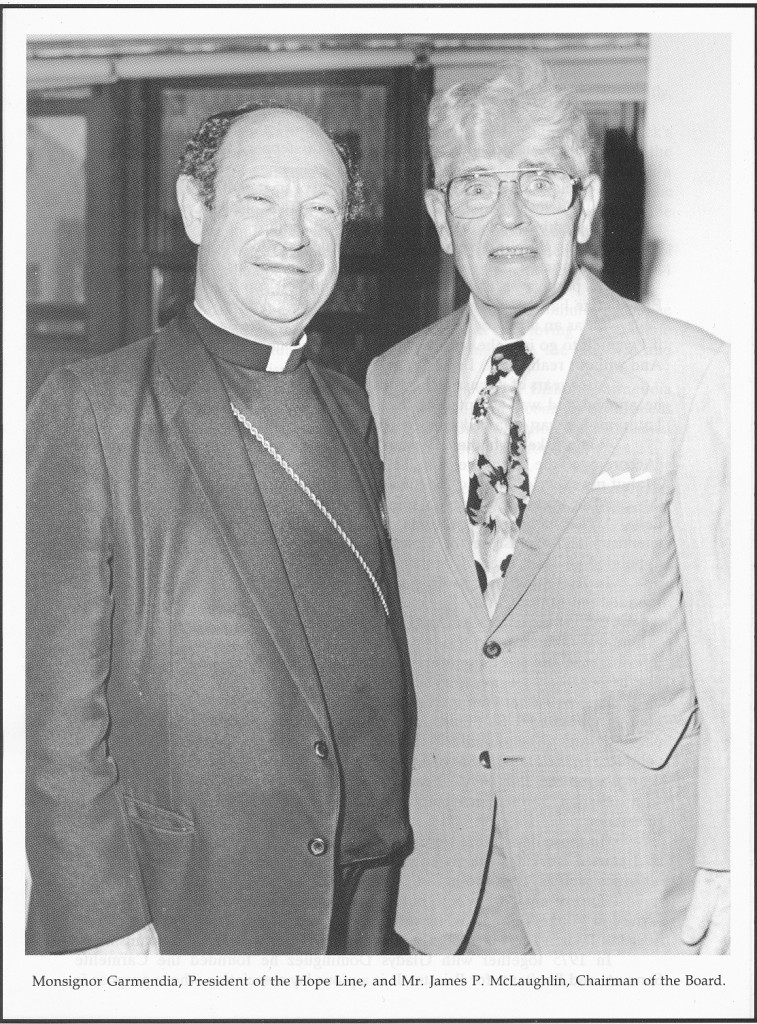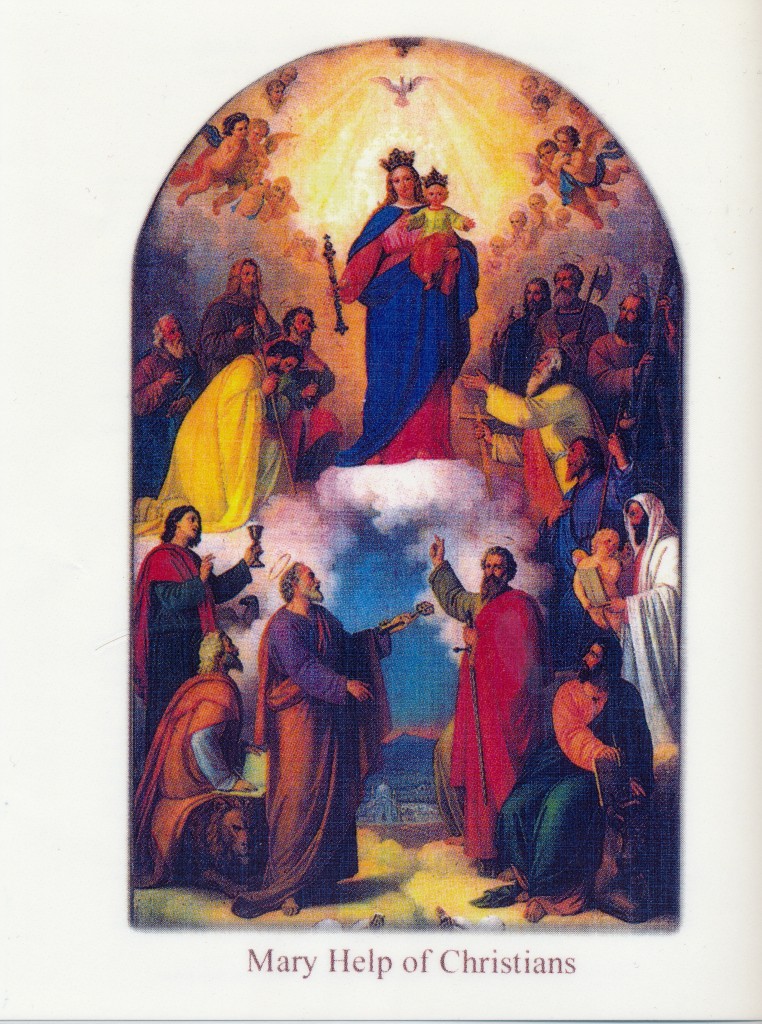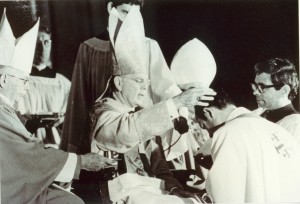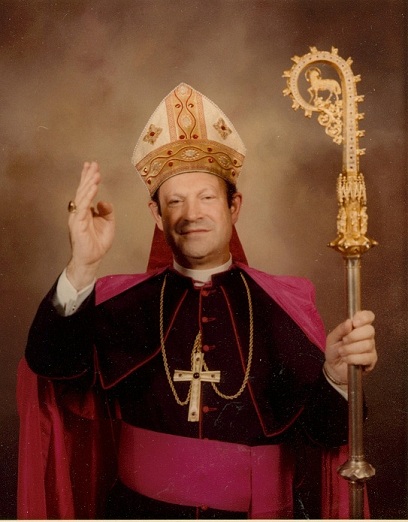 Mario De Jesús Paredes (1997)
Mario De Jesús Paredes (1997)
Director Ejecutivo del Centro Católico Hispano del Nordeste
QUIERDO ACERCARME A LA FIGURA de Monseñor Francisco Garmendia con admiración, veneración y profundo aprecio. Admiración por su testimonio de vida ejemplar.
Veneracion por la dimensión de piedad y santidad que resplandece en sus 50 años de sacerdote y de obispo; y profundo aprecio por el don de su amistad sin tacha y por la especial benevolencia que ha tenido para conmigo, en el nivel personal, en mi labor en el Centro Católico Hispano del Nordeste, y en mi vinculación a las obras suyas, como la Linea de la Esperarnza, en donde le he podido colaborar muy de cerca.
Esa admiración, esa veneración y ese profundo aprecio hacia Monseñor Francisco Garmendia lo tengo hacia la triple realidad que sintetiza su vida: el modelo del caballero, del sacerdote y del obispo.
Lo primero que resalta dentro de la fuerte y alavez amable y suave personalidad de Monseñor Garmendia, es su caballerosidad; su hidalguia natural, enraizada en su ancestro vasco, con toda esa fuerza que le da la diafanidad de la mirada, la lealtad sincera, la rectitud en el obrar y esa laboriosidad, que no admite ocio ni mediocridad.
Monseñor Garmendia es un caballero vaico, de la misma estirpe de inigo de Loyola, incapaz de traicionar, con una palabra sin doblez y conun espiritu de servicio, que quiso consagrar desde su juventud al Seflor Eternal, como lo llamara su coterraneo en la celebre meditacion de las Dos Banderas. Ciertamente Monsenor Garmendia en cualquiera de las actividades que hubiese escogido, hubiese hecho honor a la altiva caballerosidad de su pueblo vasco y lo hubiese hecho sin ninguna presuncion y sin el menor asomo de soberbia, pero eso si con total independencia, sin doblegarse, ni claudicar, siguiendo solo la voz de su conciencia y el intimo compromiso de su vida.
Gracias, muchas gracias, Monseñor Garmendia, por ese testimonio de caballerosidad cristiana que nos ha dado. Es dificil encontrar en nuestro tiempo ese signo de autenticidad y cristianismo.
Monseñor Garmendia es un sacerdote con todo lo que eso significa de consagracion y de servicio en la Iglesia Catolica . Esos 50 años que han pasado desde su ordenación en Vitoria, la hermosa capital del Pais Vasco y de la provincia de Alava, han sido un querer modelarse en la imitacion de Cristo, Sacerdote y Rey.
En Monseñor Garmendia resplandece lo mas profundo de la vocacion sacerdotal – sacerdos propter sacrificium – ; Monseñor Garmendia es ante todo un hombre piadoso, de oración, profundamente eucaristico y filialmente mariano. La dimensión litrúrgica la tiene ya, me supongo con un gran esfuerzo de ascesis personal, cosida tan profundamente a su vida que quiere ser instrumento de gracia y de salvación, por encima de la inevitable carga de pecado producto de la debilidad de nuestra naturaleza humana.
En el corazón de Monseñor Garmendia está presente el grito de san Pablo: “¡Ay de mí si no euangelizare!” y por eso él ha asumido la dimensión profética, sobre todo en su aspecto catequético. Él ha sabido denunciar con valentía, como es el caso de su defensa al derecho de la vida del que está en el seno materno; él ha sabido asumir la causa de los migrantes y de los pobres; pero é1, sobre todo, ha anunciado siempre al Señor Jesucristo y a su Evangelio, y ha presentado a Cristo en el misterio salvador de la Cruz.
Monseñor Garmendia ha sabido entender el sentido y el valor de la pastoral social y caritativa; ha vivido la doctrina social de la Iglesia; ha sido un verdadero promotor de la auténtica liberación cristiana, sin estridencias, ni desviaciones ideológicas. Él – como dijera Pablo VI- para arnar y servir a los pobres, no ha necesitado de ningún extremismo, sino que simplemente ha optado por la radicalidad del Evangelio.
Hace 20 años, Monseñor Garmendia recibi6 la consagración episcopal como primer obispo hispano en Nueva York, sirviendo con lealtad como Obispo Auxiliar a sus Eminencias los Cardenales Cooke y O’Connor. Difícil tarea que ha sabido cumplir con dignidad, altura y una humildad que edifica y llama a la reflexión.
Monseñor Garmendia ha sabido ser discreto y efectivo. Muchos tal vez no han sabido comprender su actitud humilde y su trabajo callado. Pero él ha cumplido, y con creces, con el compromiso de su consagración episcopal.
Gracias, muchas gracias, Monseñor Garmendia por su vida y ministerio sacerdotales, por sus celebraciones eucaristicas y sacramentales, por su predicación sencilla y popular y por su amor a los necesitados, sobre todo a los migrantes hispanos.
Monseñor Garmendia ha sabido ser amigo y padre de los sacerdotes, preocupado por ellos, en especial por su vida espiritual y por su camino de santidad. No creo que ningún sacerdote que se haya acercado a Monseñor Garmendia recibiera de él un rechazo. Ha estado cerca de muchos, sobre todo de los enfermos. Ha sabido estimular, sanar heridas y acompañar. Ha sido un verdadero pastor de sus fieles, un auténtico padre de los pobres y de los migrantes. Ha sido un defensor de las familias y un impulsor de los movimientos apostólicos. Ha promovido la religiosidad popular y ha estimulado y apoyado la pastoral vocacional, tanto sacerdotal como religiosa.
Monseñor Garmendia es un obispo con visión, propulsor del uso pastoral de los medios de comunicación social, los areópagos modernos, como dijera Juan Pablo II; y ha creado obras de gran contenido social, entre las que se destaca La Líneas de la Esperanza. Como obispo, ha sabido ser valiente y no ha temido enfrentamientos, si fuese el caso, en defensa de las causas nobles.
Monseñor Garmendia, gracias, muchas gracias por su rico episcopado y por todo lo que eso significa. Su Excelencia ha hecho honor a la imposición de las manos como sucesor de los apóstoles y ha sabido mostrarnos cómo se puede ser obispo, pontífice —- es decir, puente —- entre Dios y los hombres, en medio del caos de nuestra querida Nueva York, dentro de las especiales condiciones del Bronx.
Gracias, Monseñor Garmendia por sus 73 años de caballero cristiano, por sus 50 años de piadoso sacerdocio y sus 20 años como obispo ejemplar.
 [1997] IN MANY PARTS of the South Bronx, inner city residents have been left to fend for themselves.
[1997] IN MANY PARTS of the South Bronx, inner city residents have been left to fend for themselves.






